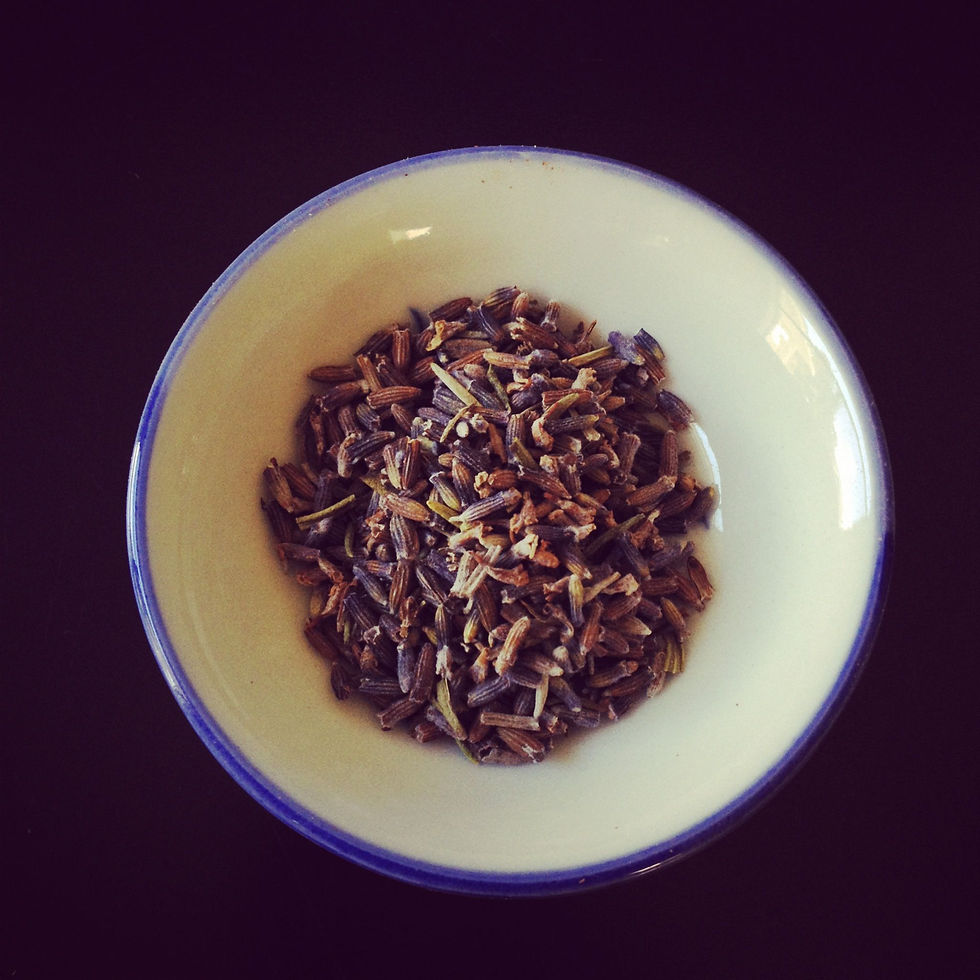How do you like your herbs?
- ang4an
- Oct 4, 2023
- 3 min read
There are many different ways to take herbs. Here are some of the most common methods of preparation.
INFUSION
Made just like a cup of tea using 1 - 2 cups boiling water steep 1 -2 tsp of herbs for 5 - 10 minutes or longer if necessary to extract as much of the medicinal components as possible. Strain the herb and sip. If a particularly bitter herb is used add a bit of honey or agave syrup, if desired. Some of my favourite herbs to have day to day are

mint
lavender
chamomile
chrysanthemum
rose
nettle
tulsi
lemon balm
When looking for something more medicinal combine several herbs together to enhance the effect. For example: blend lemon balm, skullcap and chamomile for relaxation. Use mint with nettle and rose for more of a pick me up.
DECOCTION
Similar to making a tea except the herbs and water are simmered together for a longer period of time. This helps to extract more of the medicinal properties and is especially useful for roots and barks. Also more herbs can be used thereby making a more potent medicine. The amount of herbs used varies depending on the formulation, but a good starting point is about a 1/4 cup of herbs to 4-5 cups of water. Simmer at a low heat for 45 - 60 minutes. The amount of water should be reduced by half. At this point you can strain and drink or strain and simmer again with fresh water. Strain and then combine the two decoctions together and then drink in several doses throughout the day.
SYRUP
Following on from the decoction is a syrup. After you have made a decoction (no need to double cook) continue to simmer the liquid down to ½ cup and then add equal parts honey. Preferably local, unpasteurized. Agave syrup or food grade vegetable glycerin could also be used. The honey or vegetable glycerin will help with preservation. Take by the tablespoon as needed. See the previous post Stress and Sleep Syrup DIY for step by step instructions.
TINCTURE
Tinctures are convenient to take and can be made quite easily. Most commonly made using alcohol - any neutral spirit will work, food grade vegetable glycerin and vinegar are also options. Herbs are coarsely ground and put into a large mason jar. Solvent of choice, ie.
alcohol is poured over top of herbs until they are covered by a couple of inches. Seal the jar and shake well.

As the alcohol is absorbed more may need to be added to ensure the herbs are completely covered. Shake daily for 4 - 6 weeks. Strain the herbs and store the tincture in a dark bottle in a cool, dark place. Alcohol based tinctures will last for several years, glycerin based 1 - 2 years and vinegar for 1 year.
POWDER CONCENTRATES

Following the making of a tincture add in either arrowroot powder, tapioca powder or powdered herb to the tincture in a ratio of 5 grams to 30 ml. Make sure the powder is completely dissolved and well blended. Spread thinly on a tray to dehydrate - either in a dehydrator at 140 degrees or in an oven at a very low temp. Dehydrate until it is dry and brittle. Remove from tray and cool. Once cool grind into a powder. Store in a cool, dark place ideally in an amber glass jar.
HONEY PILLS
Some well known formulas in Chinese medicine are made by grinding the herbs into a fine powder mixing with honey and rolling into balls. Examples are Bǎo Hé Wán (Pill to Harmonize the Stomach), Má Zǐ Rén Wán (Hemp Seed Pill), Lìu Wèi Dì Huáng Wán (Six Ingredient Pill with Rhemannia). Making honey pills is a fun activity to do with kids to get them interested in herbs and health.
Using a coffee grinder add dried herbs and grind very finely - pass through a small sieve and repeat until all herb is ground up. Mix in a bit of honey at a time. Consistency should be like dry cookie dough. Once mixed roll into pea size balls. Store in an airtight container in the fridge or a cool, dark cupboard. Dosage varies depending on herb and purpose. Easy to use herbs are:

hawthorn
bitter orange peel
ginger
turmeric
lemon balm
liquorice
fennel
Of course there are many other methods for making herbal remedies. Often requiring more specialized equipment. And in a future post I will discuss topical applications.
In addition the information provided is for educational purposes only and is not intended to be medical advice, diagnose or treat any conditions.





Comments